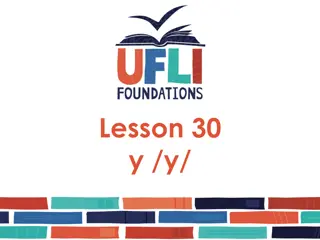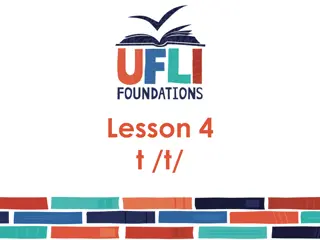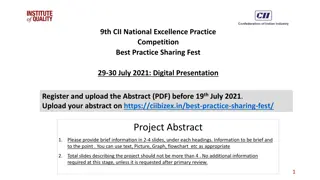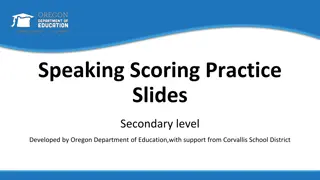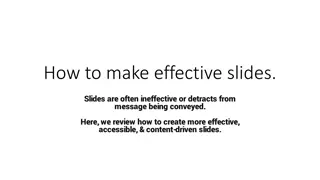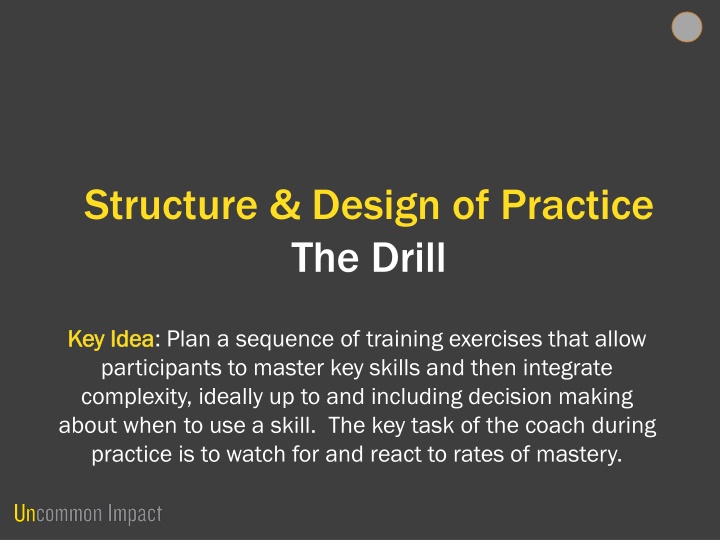
Enhance Training Skills with Structured Practice Drills
Plan structured practice drills to help participants master key skills and progress towards decision-making abilities. The practice cycle involves intentional learning, error anticipation, and skill integration. Incorporate decision-making scenarios to enhance skill application. Design scrimmages for realistic performance simulations with focused feedback.
Download Presentation

Please find below an Image/Link to download the presentation.
The content on the website is provided AS IS for your information and personal use only. It may not be sold, licensed, or shared on other websites without obtaining consent from the author. If you encounter any issues during the download, it is possible that the publisher has removed the file from their server.
You are allowed to download the files provided on this website for personal or commercial use, subject to the condition that they are used lawfully. All files are the property of their respective owners.
The content on the website is provided AS IS for your information and personal use only. It may not be sold, licensed, or shared on other websites without obtaining consent from the author.
E N D
Presentation Transcript
Structure & Design of Practice The Drill Key Idea Key Idea: Plan a sequence of training exercises that allow participants to master key skills and then integrate complexity, ideally up to and including decision making about when to use a skill. The key task of the coach during practice is to watch for and react to rates of mastery.
Typical* Practice Cycle Intro: Intro: Describe and Describe and Model Model What am I trying to do? Intentional participants learn faster. Share the Goal Not just how to do the drill; how to do the skill really well. Success Points Plan your model! Model CFU The sooner you know they don t get it the better.
Typical* Practice Cycle P P l l a a n n n n i i n n g g Intro Intro Describe Describe Model Model Plan for Error Error in practice is inevitable. Anticipate likely errors, assess constantly, build in time to respond to errors.
Typical* Practice Cycle Intro: Intro: Initial Initial Execution Execution Describe and Describe and Model Model With a simple skill that you can build from Start Small Systems for Practice Build systems to make practice fast and efficient: stop watch, start cue, name for the drill, practice tracker.
Typical* Practice Cycle * Integrate Integrate Intro: Intro: Initial Initial Execution Execution Describe and Describe and Model Model Re Re- -Master Master Master CFU and cycle back if needed. Encode success then move on * Integrate With success, add skills, complexity or build towards reality.
Typical* Practice Cycle * * * Integrate Integrate Integrate Integrate Integrate Integrate Intro: Intro: Initial Initial Execution Execution Describe and Describe and Model Model Re Re- -Master Master Re Re- -Master Master Re Re- -Master Master Master CFU and cycle back if needed. Encode success then move on * Integrate With success, add skills, complexity or build towards reality. Go Past Right Include multiple rounds. Getting it right=mid-point of mastery. Decision Decision Making Making It s a problem-solving game; to prepare players you must begin to include decision making: When do I use it? How?
Structure & Design of Practice The Scrimmage Key Idea: Key Idea: Plan scrimmages to simulate performance conditions but engineer them to get maximum benefit from feedback and the opportunity to execute specific skills with frequency.
Scrimmage Design: Stages and Types Pre Pre- - Scrimmage: Scrimmage: Integrated Integrated Practice Practice Varied/Integrated Practice Varied/Integrated Practice practice multiple skills with unpredictable pattern to practice switching on & maximize learning by making recall more demanding. Phase 1 E Execution with xecution with decision execute is as critical as the skill with execution decision making making deciding when and why to Phase 2
Scrimmage Design: Stages and Types Purposeful Purposeful Scrimmage Scrimmage 1: 1: Simplified Simplified Scrimmage Scrimmage Pre Pre- - Scrimmage: Scrimmage: Integrated Integrated Practice Practice Set a clear goal Set a clear goal- - we are scrimmaging, but want to practice executing a particular set of skills Real conditions often simplified to 1) make desired skills/decisions occur more often 2) maximize amount of practice (e.g. small sided games )
Scrimmage Design: Stages and Types Purposeful Purposeful Scrimmage Scrimmage 1: 1: Simplified Simplified Scrimmage Scrimmage Purposeful Purposeful Scrimmage Scrimmage 2: 2: Design Design Parameters Parameters Pre Pre- - Scrimmage: Scrimmage: Integrated Integrated Practice Practice Increasingly realistic performance environment but set rules to shape actions. Examples Examples: balance numbers to first execute first w advantage of numbers (10 v 9); then even (10.v 10); then short (10 v 10). Each attack must begin at the back with ball going to #2 or #5.
Scrimmage Design: Stages and Types Purposeful Purposeful Scrimmage Scrimmage 1: 1: Simplified Simplified Scrimmage Scrimmage Purposeful Purposeful Scrimmage Scrimmage 2: 2: Design Design Parameters Parameters Purposeful Purposeful Scrimmage Scrimmage 3: 3: Replication Replication Scrimmage Scrimmage Pre Pre- - Scrimmage: Scrimmage: Integrated Integrated Practice Practice As if it was a game but with pause points as needed for feedback.
Feedback During Scrimmage 1) Break in Play: Pause. Let s talk about that. Feedback: 30 seconds/one idea Roll back: Try it again from there Roll on: Roll back and keep going 2) Natural Stopping Point Great. Let s stop here for a second and reflect before you go on to the IP 3) Real Time Feedback Total focus: 1 thing; economy of language Data feedback (signal to circulate) Model: Try it like this. VERY FAST
The Single Most Important Teaching Skill Recognize and act on the difference between I taught it and they learned it.
The Single Most Important Teaching Skill Observe intensively for mastery of small number of specific skills during each round. React accordingly (re- master or integrate) and without frustration. More Wooden: Never mistake activity for achievement.
CFU During Typical Training * * Integrate Integrate Integrate Integrate Intro: Intro: Initial Initial Execution Execution Describe and Describe and Model Model Re Re- -Master Master Re Re- -Master Master Tracking mastery here, during execution, is the key skill of a teacher/coach.






